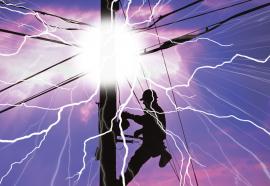2007 Finance Roundtable: Pricing Regulatory Risk
Despite a favorable outlook for utility finance, cost pressures are straining rate structures.
Utilities are bringing monumental capital-expenditure plans before rate regulators just as they’re dealing with a barrage of rising costs—for fuel and other commodities, as well as labor, pension-fund obligations, and interest payments. Ten energy-finance luminaries elaborate on the industry’s fortunes.










